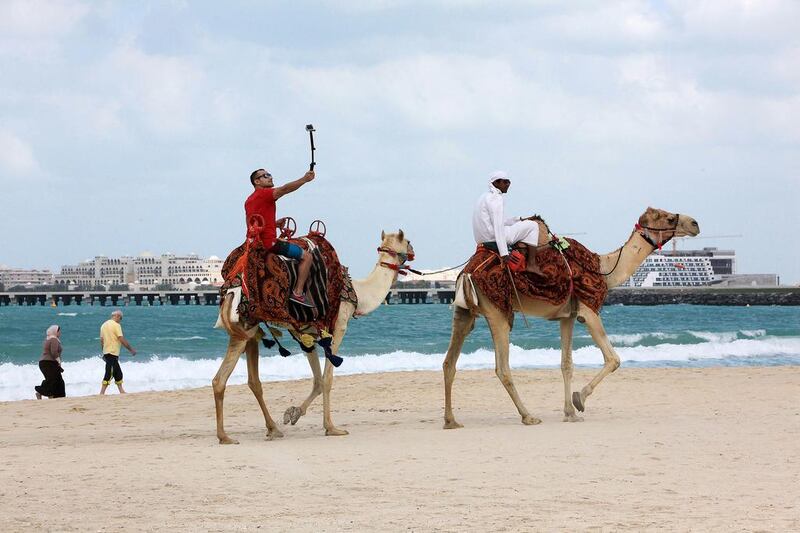Dubai’s tourism sector is expected to shrug off slower global economic conditions and return towards previous growth levels this year as officials change the way visitor numbers to the emirate are calculated.
“We expect to grow the tourist numbers at 7 to 9 per cent annually,” said Helal Saeed Almarri, the director general of Dubai’s Department of Tourism and Commerce Marketing (DTCM).
On Sunday, the DTCM published revised figures for last year that show an increase in the number of tourists to 13.2 million, a growth of 8.2 per cent year on year.
It previously said in March that 11.6 million people visited the emirate last year, a growth rate of about 5.5 per cent. Based on the old method, in 2013, 11 million visited, up 10 per cent from 10 million in 2012. In 2011, 9.3 million people visited, according to DTCM data.
Dubai has set a target of 20 million visitors by 2020.
The new figures take into consideration tourists staying at holiday rentals, with family and friends and those from cruise ships. Previously, DTCM published data showing just hotel guests rather than overall visitor numbers.
“We wanted to be transparent on how many tourists are visiting Dubai,” Mr Al Merri said at the Arabian Travel Market trade show in Dubai. “I wouldn’t say there is no pressure [to meet the 20 million tourist target] but so far we are on track.”
Difficulties in source markets, the fall in oil prices and swings in currencies such as the US dollar, euro and Russian rouble have had an impact on Dubai’s tourist numbers in the past few months.
“We have a diverse set of source markets that allows us to meet those challenges and allows us to grow,” Mr Almarri said.
It would continue to tap into its key source markets with Saudi Arabia, India and Oman topping the ranks in terms of family spending per trip. China, Africa and South-East Asia are among its growth markets.
The strong dollar and the recovery of the Egyptian market, have also resulted in tourists heading back to the once-popular beach resorts and other attractions of the North African country as Dubai became more expensive in comparison.
“We target a different market segment [compared to Egypt] and I don’t see any major competition from the region,” Mr Almarri said. “We don’t have such a high degree of charter flights and package tourism [as Egypt], we have more independent travellers and diverse source markets.”
Visitor numbers from the meetings, incentives, conferences, and exhibitions segment are expected to grow by 10 per cent this year, based on the new figures.
The rate of increase in hotel room stock is expected to be in the low double digits this year, with the fall in revenue per available room (revpar) starting to level out, according to Mr Almarri.
“The average room rates are expected to grow in line with the tourist numbers,” he said.
Dubai had about 93,030 rooms at the end of January.
It is expected to have 3,600 more for the next three quarters, and 8,400 more next year, according to the consultancy JLL.
Last year, 46 hotels, including the 351-room Marriott Hotel Al Jaddaf and 654-room Sheraton Grand, opened in the emirate.
Room rates at four and five-star properties continued to slip for the third consecutive month in March as increased supply applies pressure on average prices. These fell by 5.5 per cent year-on-year to touch $380.85, according to data from HotStats last week.
Even as occupancy levels stayed at 88.8 per cent, revenue per available room fell by 4.8 per cent to $338.25 during the same period.
“Doing business in Dubai is very competitive and many operators and developers are not achieving their [revenue] targets,” said Omer Kaddouri, the president and chief executive of Rotana. “Many people think it will ease in the fourth quarter but there will be new hotels opening and other markets will open.”
Hoteliers can expect to feel the heat on room rates during the slower summer months when revpars can drop by 6 to 7 per cent, according to Mr Kaddouri.
Rotana, for instance, expects room rates to start as low as US$50 a night during the summer.
ssahoo@thenational.ae
Follow The National's Business section on Twitter






